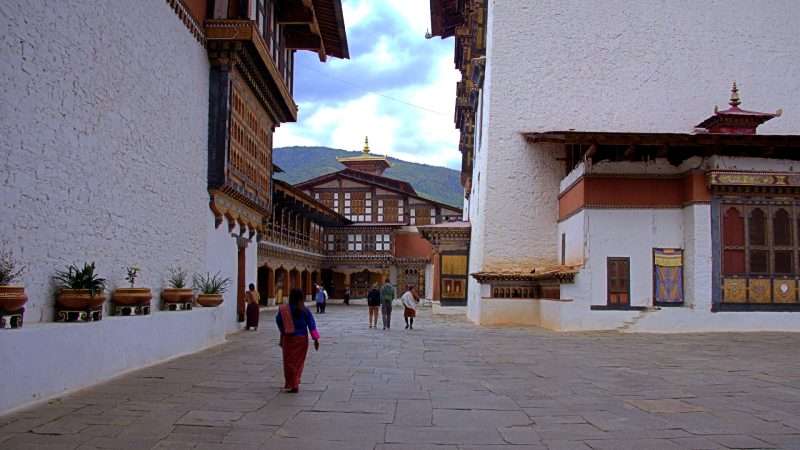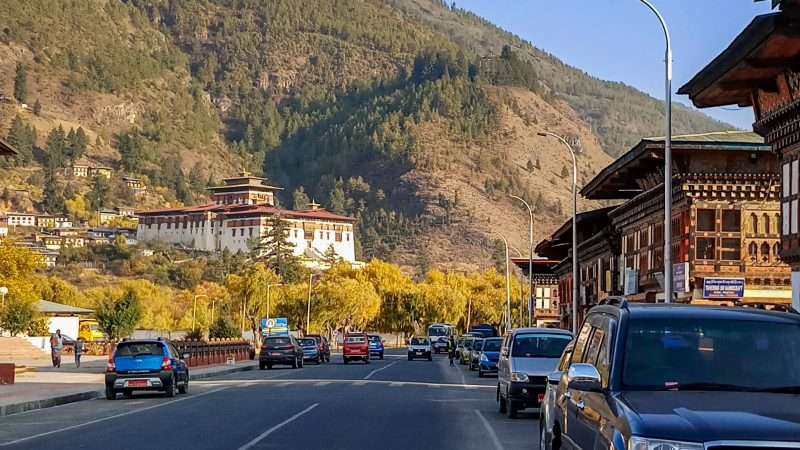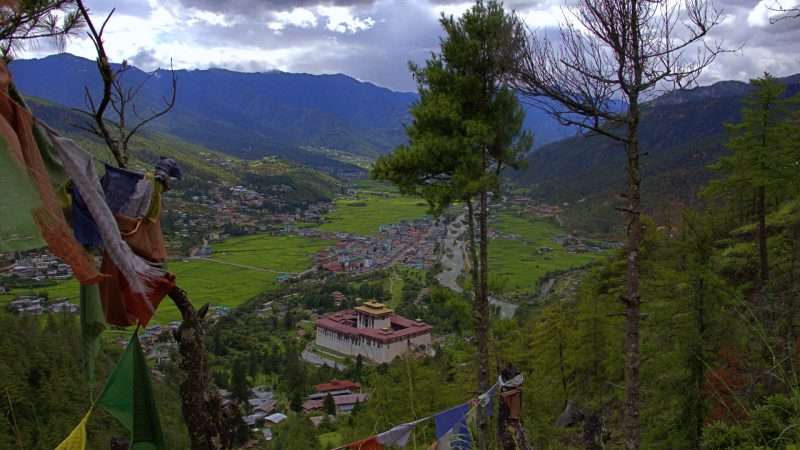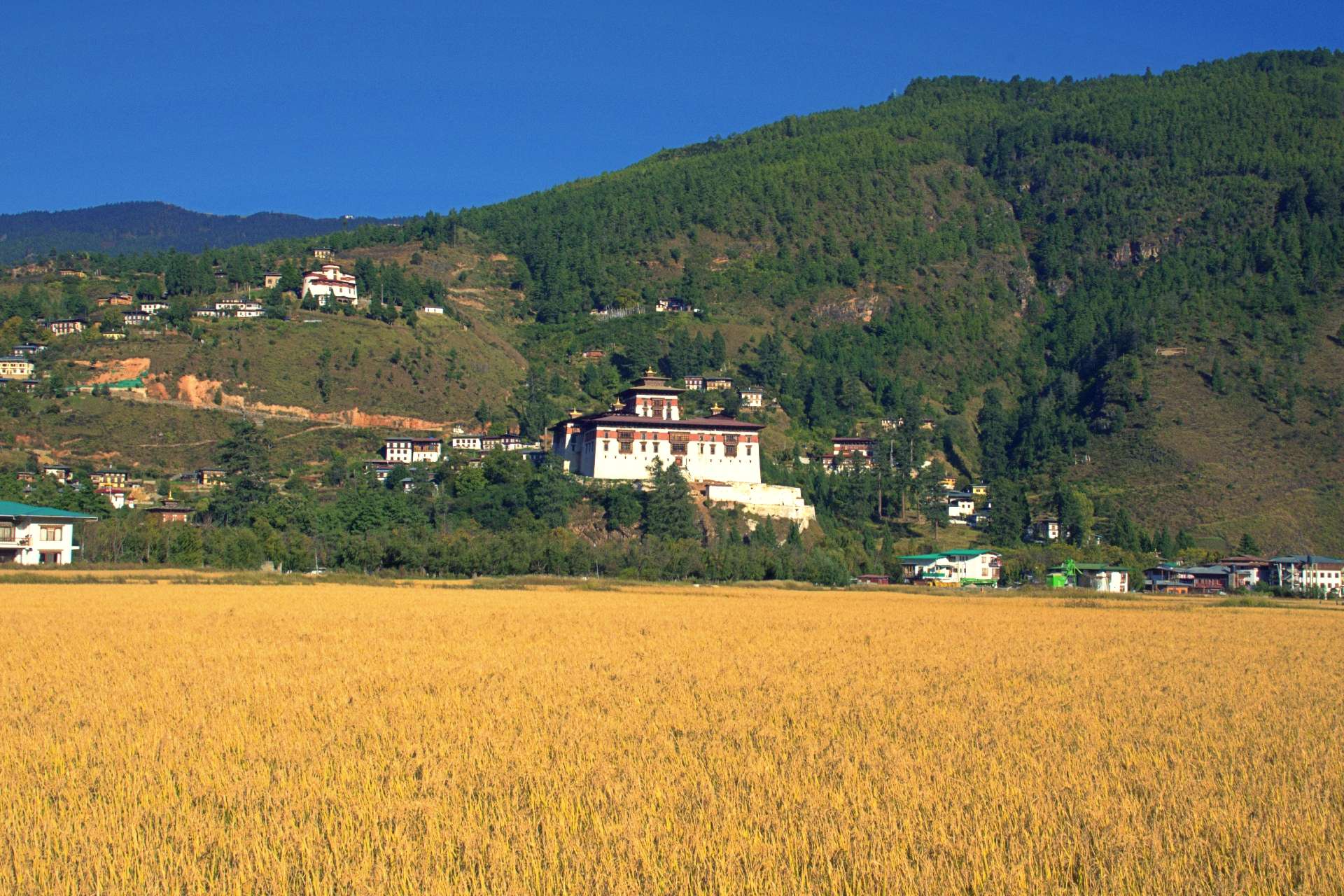EXCELLENTVerified Cultural immersion in Bhutan Omsha created a custom itinerary for our tour to Thimpu, Paro and Punakha. Our guide Namgay met us at the airport and was courteous, friendly and hospitable throughout. Her knowledge of temples and dzongs was extremely thorough and her enthusiasm to share stories of her culture and good humour made for a truly memorable trip. She took us to some truly spectacular locations and made it a fantastic trip. We will be coming back to Bhutan and hope to see Namgay and our driver Tsewang in future!Posted onVerified We miss Omsha already! Omsha is a fantastic and accommodative travel agency…ideal for visiting Bhutan. From the moment we arrived to the moment we left, we felt very well taken care of. Our guide, Bijay, was kind, fun, knowledgeable and a pleasure to spend 10 days with. We would recommend Omsha to anybody visiting the beautiful land of Bhutan.Posted onVerified Magical experience in Bhutan An excellent experience, loved the country, the people, the scenery, and the food. This wouldn't have been possible if it weren't for Omsha travel. We evaluated several companies but found Omsha to be the most responsive, flexible, and competent. Our guide, Sanom, was excellent, knowledgeable, and accommodated our needs. The driver, Sharup, made us feel comfortable and safe. I highly recommend Omsha for your Bhutan travels.Posted onVerified Best of the best in Bhutan Omsha provided us with the trip of a lifetime. Nawang was patient and responsive as we created a custom tailored tour. He found off the beaten path activities that provided an intimate look at day to day life in Bhutan. Our guides Sonam and Tashi were warm, funny, and extraordinarily knowledgeable. We left the country feeling that we had gained new family. Thank you to Omsha from the bottom of our hearts.Posted onVerified Beautiful Bhutan Great experience! Fast and responsive communication right from the first WhatsApp message. Visa was sorted very smoothly and everything worked out as planned. I had a very kind and respectful tour guide (Lhazin Dorji) and a reliable driver who ensured a memorable stay. I really enjoyed my short stay in the land of the thunder dragon.Posted onVerified Bhutan Tour OMSHA Travel I had wonderful experience during our tour in Bhutan with OMSHA travel, our tour guide Tashi Tenzin and driver Sun-Zu were exemplerary, very friendly and accommodating in our tour. They guide us in every tourist spots we go and make sure we are safe, and enjoy every moment during our tour. One of the best tour guide and driver I've had. I will highly recommend them wheh you visit Bhutan. I will give them ⭐️⭐️⭐️⭐️Posted onVerified Extraordinary! ❤️ The experience is superb! Plus having one of the bests tour guides- nothing can be asked for! It wasn’t an awkward experience day by day, I get or rather we felt comfortable with them. Total happiness and very good experience..🫶🏻 we were taken cared well by Tashi Tenzin and Sanju!Kudos to them! It was also a hassle free experience and no hints of no can be given to the services provided! It was seamless even though our flight was delayed..Really this country has a lot to offer so the only regret is not having more days to stay and explore more..❤️👍🏻👏🏻All the bestPosted onVerified Eyeopening Experience We booked our Bhutan trip with OMSHA Travel and couldn’t be happier with the experience. We entered Bhutan via the India–Bhutan land border and OMSHA arranged everything seamlessly from the airport pickup in India to ensuring our safe entry into Bhutan. As two young ladies traveling together we truly appreciated the sense of security and care they provided throughout.Our 4D3N itinerary was packed and while we enjoyed every moment I would recommend staying longer if possible. Bhutan has so much to offer and travel time between destinations can take up a fair portion of the day. Sharing a general idea of what you would like to see beforehand also helps OMSHA customize the trip perfectly.A highlight was definitely the Tiger’s Nest Monastery. The hike is breathtaking but also steep and challenging so being reasonably fit is important to fully experience it.Overall OMSHA Travel made our Bhutan journey smooth, safe and unforgettable. Their attention to detail and hospitality left us with lasting memories. Highly recommended.Posted onVerified Good Experience With Sonam and Sunzu We found Omsha Travel as we were sourcing how to get from India to Bhutan overland and his website was very informative. He was also very quick with his replies on Whatsapp which we appreciated a lot. We had a 4D3N tour in Bhutan and the tour was very flexible and customisable, allowing us to choose wherever we wanted to go. Our guide and driver was Sonam and Sunzu (Soju) who were so friendly and we hit it off so well~ they treated us like friends and the conversations with them made us learnt so much about Bhutan. Sonam is very knowledgable with all the history and Sunzu drives very smoothly. Also, the hotels were top notch with very good views👍 We enjoyed the stay and could rest properly after a long day.If I could change anything about the trip, I would stay for more days to fully appreciate the beauty of Bhutan.Posted onVerified A smooth trip The tour was well organised and went smoothly. Appreciate the flexibility of the arrangements in taking into account our energy levels. The guide Sonam was fun and engaging, giving us many stories on Bhutanese culture. The drive was smooth too, thanks to our driver Tewang. All in all, a great trip.
Bhutan Tour Packages:
Travel Tips:
Blog Posts:
- Royal Highland Festival at Laya Bhutan
- Gangtey Gonpa Tshechu – A Spiritual Celebration Amid the Valleys of Phobjikha
- France to Bhutan Travel Guide: Everything You Need to Know
- Flights from Sydney to Bhutan via Bangkok: A Complete Guide
- Bhutan vs. Nepal Travel: Which Himalayan Country Should You Visit?
Contact us:
Paro, a picturesque valley town in Bhutan, is known for its rich history, majestic landscapes, and spiritual significance. It serves as one of Bhutan’s main cultural hubs, home to some of the most iconic monasteries, Dzongs, and temples. Whether you’re embarking on a spiritual journey, seeking adventure, or wanting to immerse yourself in Bhutanese culture, Paro has something for everyone. From the famous Tiger’s Nest Monastery to the bustling Paro town. If you’re looking for Bhutan travel packages that provide an enriching journey with a touch of luxury, Paro is a must-visit. Here’s your guide to the top things to see, and activities to make the most of your Bhutan travel.
1. Tiger’s Nest Monastery (Paro Taktsang)
One of the most iconic sites in Bhutan, Tiger’s Nest Monastery (Paro Taktsang), is perched on a dramatic cliffside 3,120 meters above sea level. This legendary monastery is a top attraction and a must-include in any Bhutan Holiday package.
- History & Significance: According to legend, Guru Padmasambhava flew here on a tigress’s back in the 8th century and meditated in the cliffside caves, which now form part of this revered monastery.
- Trekking Experience: A moderate 3-4 hour trek through pine forests leads you to this awe-inspiring site. You can take in panoramic valley views and fluttering prayer flags along the way.

2. Paro Rinpung Dzong
The Paro Rinpung Dzong, also known simply as the Paro Dzong, is one of the finest examples of Bhutanese architecture and is steeped in history. Built in the 17th century by Zhabdrung Ngawang Namgyal, the unifier of Bhutan, this fortress served as a defensive stronghold and a religious center. Today, it functions as a monastery and administrative office for Paro District.
Architecture and Significance: Paro Rinpung Dzong means “Fortress on a Heap of Jewels,” and the massive, whitewashed walls of this structure reflect its grandeur. The Dzong is accessible via a traditional cantilever bridge over the Paro River, which adds to its medieval charm. Visitors can explore its vast courtyards, prayer halls, and religious statues, as well as enjoy the stunning views of Paro town and the surrounding valley.
Festivals in Paro: If you visit during the annual Paro Tshechu, a five-day festival held in spring, you can witness traditional masked dances, music, and religious rituals that draw locals and tourists alike. The festival offers a unique glimpse into Bhutan’s vibrant culture and spiritual life.

3. Kyichu Lhakhang
Another must-visit landmark in Paro is Kyichu Lhakhang, one of Bhutan’s oldest and most sacred temples. Dating back to the 7th century, Kyichu Lhakhang is believed to have been built by Tibetan King Songtsen Gampo to subdue a demoness who lay across the Himalayas.
Spiritual Experience: The temple is known for its peaceful atmosphere and spiritual energy. Devotees and visitors alike can spin the prayer wheels, light butter lamps, and walk around the temple’s courtyard while reflecting on its rich history. The inner sanctum houses an image of Jowo Sakyamuni, a statue of the Buddha, making it a place of deep religious significance for Bhutanese Buddhists.
Cultural Importance: As you explore Kyichu Lhakhang, you’ll notice its intricate murals, religious relics, and traditional Bhutanese architecture. For culture enthusiasts, this temple provides a deeper understanding of Bhutan’s ancient roots and religious traditions.
4. Paro Town: Explore the Heart of the Valley
While Paro is known for its temples and monasteries, the town itself has plenty to offer. Paro town is a charming blend of old-world Bhutanese charm and modern conveniences. The town’s wide streets, dotted with traditional wooden houses, local cafes, and handicraft stores, are perfect for a leisurely stroll.
Shopping and Souvenirs: Paro is an excellent place to shop for traditional Bhutanese crafts such as handwoven textiles, Buddhist paintings (thangkas), prayer wheels, and more. The weekend market offers an authentic experience where you can find local produce, Bhutanese spices, and handmade goods. Many shops in Paro sell high-quality souvenirs like locally made incense, silver jewelry, and carved wooden items.
Dining in Paro: When it comes to food, Paro’s local restaurants serve authentic Bhutanese cuisine, including ema datshi (chili cheese), momos (dumplings), and red rice. Many eateries also offer stunning views of the surrounding valley, making dining in Paro a delightful experience.

5. National Museum of Bhutan
Located in the Ta Dzong, a former watchtower, the National Museum of Bhutan offers insight into Bhutan’s rich cultural heritage. The museum, situated above Paro Dzong, houses a wide variety of exhibits, including ancient weapons, religious artifacts, traditional costumes, and thangkas.
Cultural Preservation: The museum aims to preserve Bhutan’s unique history and traditions through its extensive collection. You can learn about Bhutanese art, religious iconography, and the kingdom’s military history. The panoramic view of the valley from the museum is also worth the visit, as it offers a bird’s-eye view of Paro Rinpung Dzong and the surrounding landscape.
6. Hiking and Trekking in Paro
For adventure enthusiasts, Paro offers several hiking and trekking opportunities beyond Tiger’s Nest. The valley’s dramatic landscapes make it a perfect destination for nature lovers who want to explore Bhutan’s pristine environment.
The Zuri Hike in Paro: Bhutan, is a rewarding trek that offers stunning panoramic views of the Paro Valley. The hike generally takes about 1 to 2 hours round trip, depending on your pace.
Chele La Pass: Located about 35 kilometers from Paro, Chele La Pass is one of the highest motorable passes in Bhutan, sitting at an altitude of 3,988 meters. The pass offers stunning views of the Himalayas, including Mount Jomolhari and Mount Kanchenjunga. It’s a popular spot for day hikes, and in the spring, the area is covered in blooming wildflowers.
Mount Jomolhari Trek: If you’re up for a multi-day adventure, the Jomolhari Trek is one of the most beautiful trekking routes in Bhutan. Starting from Paro, this trek takes you through pristine forests, alpine meadows, and traditional villages, with jaw-dropping views of Mount Jomolhari along the way. It’s a strenuous trek but offers an immersive experience of Bhutan’s unspoiled landscapes.

7. Farmhouse Stay and Hot Stone Bath
One of the best ways to experience Bhutanese hospitality is by staying in a traditional Bhutanese farmhouse. These farmhouses, scattered throughout the Paro Valley, offer visitors an authentic insight into rural life in Bhutan. Guests can enjoy home-cooked meals, interact with local families, and even help with daily farming activities.
Hot Stone Bath: A popular highlight of the farmhouse stay is the traditional hot stone bath. Heated stones are placed in a wooden tub filled with water and medicinal herbs. This soothing bath is a perfect way to relax after a day of trekking or sightseeing and is believed to have therapeutic benefits for body aches and stress relief.

Conclusion
Paro, Bhutan, is a treasure trove of cultural, historical, and spiritual landmarks, with something for every traveler. From the soaring heights of Tiger’s Nest Monastery to the bustling streets of Paro town, this valley offers an enriching experience that blends adventure with serenity. Whether you’re trekking through the Himalayas, soaking in a hot stone bath, or exploring ancient Dzongs, Paro promises to leave you with lasting memories of Bhutan’s timeless beauty and deep-rooted traditions.
Are you ready to explore Bhutan? Contact us to find the perfect Bhutan tour packages and start your adventure today!





